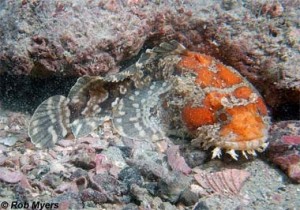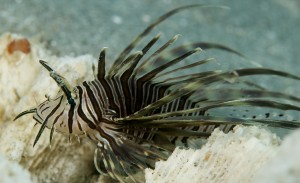 There are around 300 different species of fish swimming in the waters of the Everglades National Park. Some of them look straight out of pre-historic times, like the Gulf toadfish. These fish make their presence know. They’re one of the few fish out there that can make sounds that humans can actually hear. Read the list below for some more interesting facts on this fish:
There are around 300 different species of fish swimming in the waters of the Everglades National Park. Some of them look straight out of pre-historic times, like the Gulf toadfish. These fish make their presence know. They’re one of the few fish out there that can make sounds that humans can actually hear. Read the list below for some more interesting facts on this fish:
- The fish gets its name because the sounds it makes are toad-like grunts; they make these noises to attract a mate.
- These fish are in abundant quantities in the Gulf of Mexico and the Everglades because it is not considered a game fish and known to be poor quality when it comes to eating. It’s slimy outside can be toxic, so people avoid eating it.
- They are brown fish and they spend a lot of their time hiding in sand and seaweed. They prefer shallow waters.
- They are known to be a sluggish fish. They can live as deep as 820 feet in the water.
- It darts out from seaweeds to go after prey.
- They Can stay alive out of water for a decent amount of time.
- They lack scales.
- They can grow up to 12.8 inches in length and weigh up to one to three pounds.
- They are a bottom feeder feeding on crustaceans, annelids, mollusks, and gobies.
- Their slimy coating on their body can cause physical irritation to humans.
- It is also known as a dogfish, mudfish, and oysterdog.
Take a ride through the Everglades yourself to see the vast wetland that is home to so many different species. An airboat ride gives visitors an up-close look at the Everglades; visitors have the chance to spot many different animals, replies, fish, and amphibians. Book an airboat tour with Captain Mitch’s Airboat Tours today by calling 800-368-0065 or clicking here.
Photo courtesy: Rob Myers, www.flmnh.ufl.edu
 Ever heard of the lionfish? It’s actually quite a pretty fish with its pectoral fins, brownish stripes; however, it’s not so good for the Everglades. It’s considered an invasive species. Invasive species, non-native species to an area, happen to have the ability to live and thrive in habitats that are not their true home or region. Lionfish haven’t been a huge problem yet in the Everglades, but their numbers are increasing each year. In 2014, 13 lionfish were removed from Everglades National Park.
Ever heard of the lionfish? It’s actually quite a pretty fish with its pectoral fins, brownish stripes; however, it’s not so good for the Everglades. It’s considered an invasive species. Invasive species, non-native species to an area, happen to have the ability to live and thrive in habitats that are not their true home or region. Lionfish haven’t been a huge problem yet in the Everglades, but their numbers are increasing each year. In 2014, 13 lionfish were removed from Everglades National Park.





